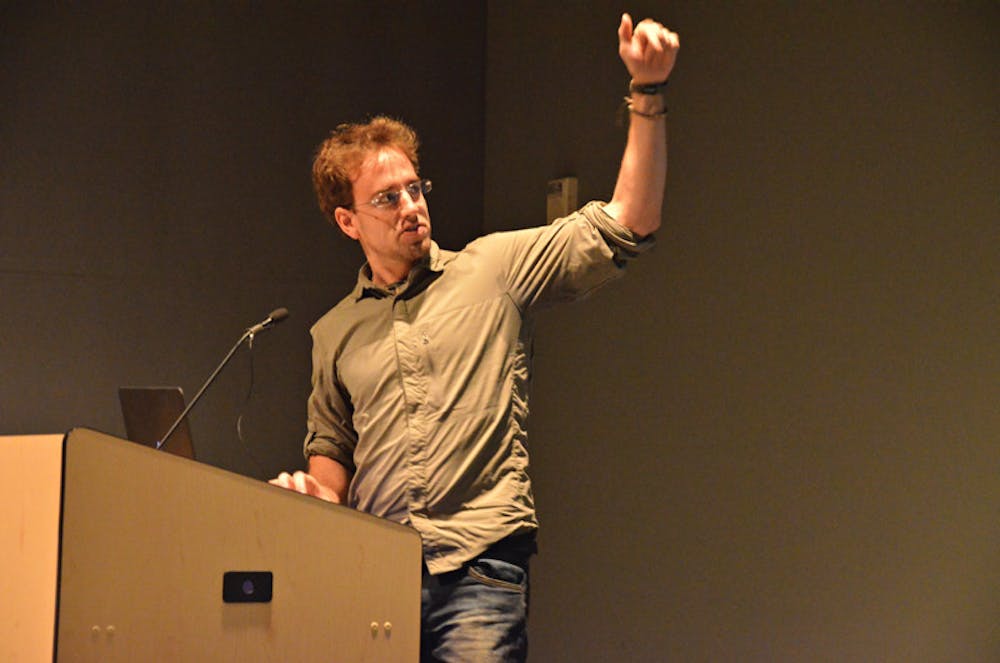Daniel Byers ’08 experienced the worst day of his life on assignment as a photographer from National Geographic. Forced to spend the night in an ice cave, his feet froze, and he drank water from melted snow. Even so, he said, looking out over the ancient landscapes the morning after breathed new life into him.
The Creative Mind Mini-Lectures Monday night, which also featured self-described “art sleuth” Victoria Reed, were full of such anecdotes of adventure and revelation. The lectures took place in a packed Englander Studio in the Perry and Marty Granoff Center for the Creative Arts.
The Creative Mind Lectures aim to showcase “creative thought across many disciplines, including art, science and technology,” according to the event’s Facebook page.
The first speaker was Reed, a curator of provenance at the Museum of Fine Arts, Boston.
Provenance is “a vast and complex field that includes where artworks have been, who’s owned them and when, where, why and how they’ve changed hands,” said Nicha Ratana-Apiromyakij ’15, one of the coordinators of the lectures along with Vivian Carlson ’14.
Reed said she focuses her research on the rise of the Nazi regime during World War II because “artwork was displaced at an unprecedented rate.” She illustrated this trend by outlining two case studies that ultimately traced the mysterious origins of artwork to theft and forced sale.
Because documentation for these origins is often dubious, Reed’s research requires her to go beyond traditional art historical research, casting a net into legal loopholes, business documents and post-war restitution files, she said.
In tracing these documents through their many homes, Reed said, the emergence of “the life stories of the individual owners” allows viewers to “understand the social lives of the objects that we share.”
Best known for his photography in National Geographic, Byers also produces films that speak to global issues he has encountered in his travels. Whether shadowing snow leopards through the mountains of Afghanistan or lowering a colleague into a flaming pit to collect rock samples, Byers said his creative process always relies on “synthesizing technical knowledge from other fields” including anthropology, ecology and earth science.
“This is something very rare for modern humans to experience — the ancient earth unmediated by any human force,” Byers said of his work in wild environments.
Byers said his artistic vision lies in bridging the gap between the untouched and the civilized realms of the world and in “bringing these images back and causing people to have a stake in some of these beautiful, fringed places.”
He often uses time lapse in his films to evoke an “almost anthropomorphic” perception of a landscape, so viewers can relate to the environment as “alive in the same way that we are.”
Ratana-Apiromyakij said speakers like Reed and Byers mark a departure from previous lectures in the series that focused on “classic definitions of creativity.”
“This year, we’re trying to bring in people who are very unexpectedly creative, who use that creative thinking in a different way,” she said.

ADVERTISEMENT




